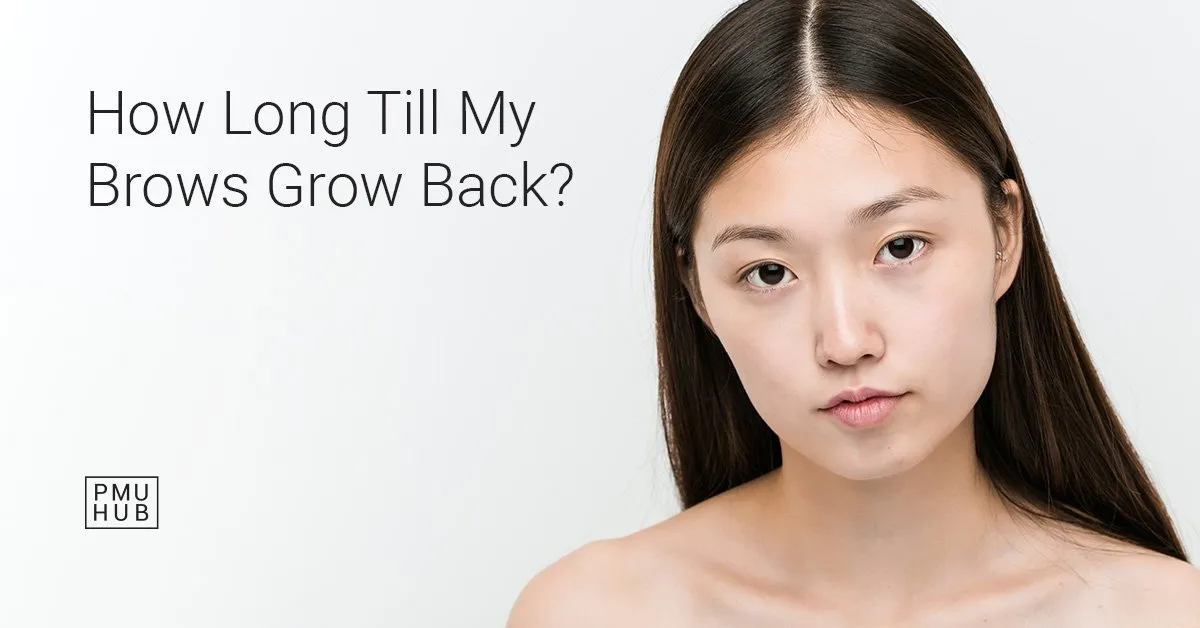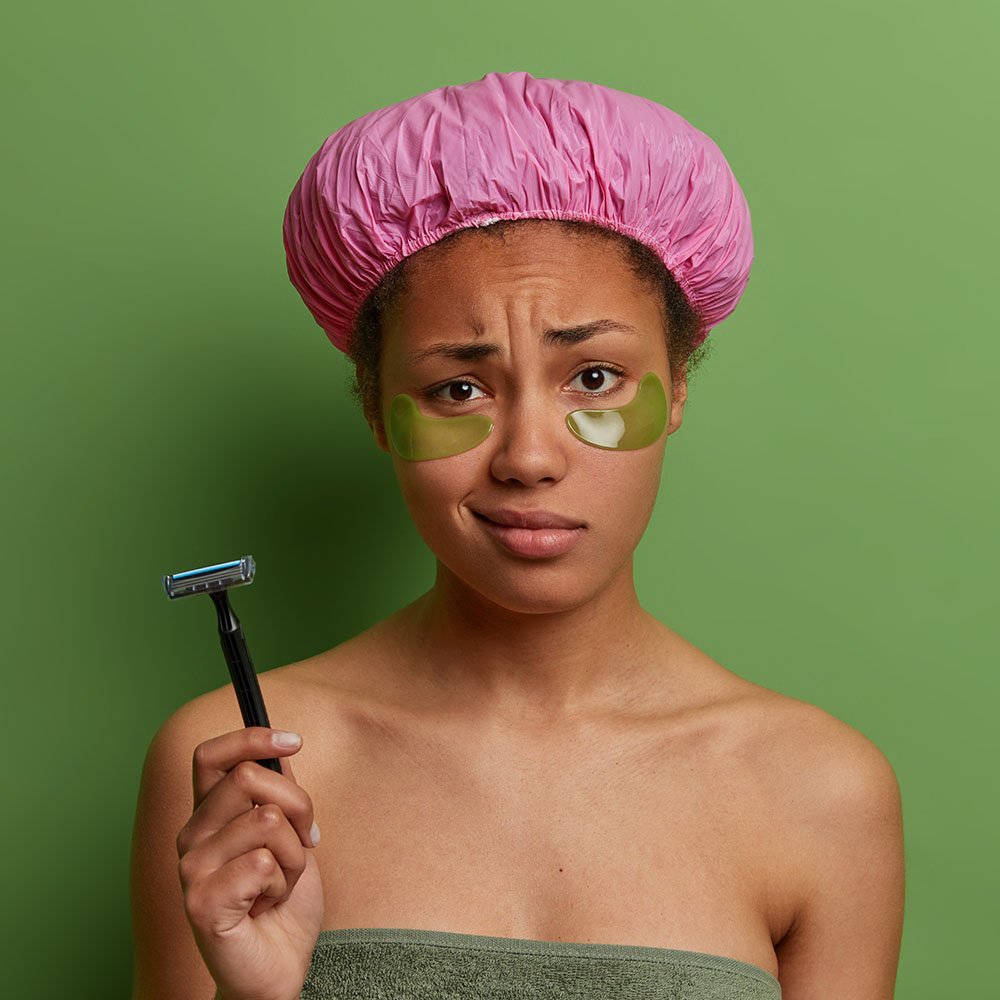

⏱️ 5 min read
Whether you’re regretting the results of your overplucking phase or you had a more recent eyebrow disaster, you’ve probably wondered at least once: how long does it take for eyebrows to grow back?
Sure, brow makeup is there to mask sparse eyebrow hairs, but it’s only a short-term fix. You want to know how long you’ll have to rely on it until you get your own brows back.
PMUHub is here with the answers.
How Long Does It Take for Brows to Grow Back in General?
For most people, it takes 30-45 days for brow hairs removed from the root to emerge from the skin.
But the brow growth cycle is more complex than that. The exact timeline varies between individuals, but everybody’s eyebrow regrowth cycle follows the same basic pattern.
Here’s an overview:
Growth
The anagen phasenew eyebrow hairs
Stabilization
The catagen phasemost people
Rest and Repeat
The telogen phase is the final turn in the eyebrow regrowth cycle. Your hairs are fully grown, the follicles are stabilized, and the whole system is inactive.
Your brows will typically rest in the telogen phase for 2-4 months. After that period, they’re shed, and the body starts the anagen phase again for a new cycle with new hairs.

How Fast Do Eyebrows Grow Back After Grooming?
It could be anywhere from days to years, or never. It depends on what kind of brow shaping method you used and how far you went with it.
Let’s take a look at how much patience you’ll need for eyebrow regrowth after each popular brow grooming technique.
How Long Does It Take for Eyebrows to Grow Back After Shaving?
A few days
Though shaving isn’t the most popular way to shape the brows, it still has its place, so naturally you might be wondering: how long for eyebrows to grow back after a shave? The answer: not long at all!
You’ll see your hair growing back as quickly as within a week. Shaving removes only the surface segment of the hair, rather than taking it out of the follicle like other eyebrow grooming methods. That means that their regrowth time is drastically reduced.
The follicles don’t have to nurture a whole hair from scratch, just push the remaining bit through the surface of the skin and keep growing it back to its natural length.

How Long Does It Take for Eyebrows to Grow Back After Plucking?
4-6 weeks
Plucking is a widely popular eyebrow grooming method which entails removing individual hairs from their follicles, usually with tweezers. Once that happens, a new hair starts growing from scratch in that place.
In other words, that particular follicle has to restart its anagen phase. You have to wait for the new hair to become visible above the surface of the skin. This will take several weeks (see above), but the specific time will be unique to you and your own hair growth cycle.
If your eyebrows are not coming back after plucking, even after your average anagen timespan has passed, the problem is likely with the follicle.
It may have been traumatized or outright damaged while removing the hair. The most common cause of this is excessive or repetitive tweezing.

How Long Does It Take for Eyebrows to Grow Back After Threading?
4-6 weeks
Threading might be considered a subtype of plucking. It’s been the go-to hair removal technique in Asia for hundreds of years, but now it’s gained worldwide popularity.
It works by twisting pieces of cotton thread and rolling them over the brows to remove the undesirable eyebrow hairs from their follicles. Those follicles then have to start growing brow hairs from square one.

How Long Does It Take for Eyebrows to Grow Back After Waxing?
4-6 weeks
Waxing removes the hair from the root, just like plucking or threading. As such, growing the brow hairs back after a wax will take your average anagen time (so, 30-45 days in most people).
One thing to keep in mind is the quality of the new hair. In some people, the brows that regrow after waxing will be sparser and softer than the original ones.
In others, however, they’ll grow back with the same strength and consistency that they had before waxing.

How Long Does It Take for Eyebrows to Grow Back After Laser Hair Removal?
1-2 years
Laser hair removal usually consists of several sessions, so the hairs that remain between treatments don’t count for the purpose of this article.
The laser targets the follicles themselves with every application. Instead of removing just the hairs, it blocks your body’s ability to produce them in the first place. That means that, after your series of sessions is complete, you remain virtually hair-free.
However, there is still a chance that your body will try to restore/replace the lost follicles. In that case, you might see some slight, sparse regrowth about a year or two after your laser hair removal.
If you want to get rid of it, you’ll need a touch-up session. If you regret your laser removal and want to regrow the hairs, it’ll be an extremely uphill battle.
That’s why laser removal is mostly reserved for the body or the genuinely unwanted, strong wayward hairs on the face, and not recommended as a method of eyebrow grooming.
Final Thoughts on Growing Brows Back
Keep in mind that all the time estimates we gave here depend on the follicle being healthy. If it has been traumatized or damaged in the process of hair removal, the new hair will grow more slowly, might emerge weaker, or might not grow back at all.
If the follicle is damaged, consult a dermatologist or trichologist. They’ll examine your eyebrows and brow skin, determine the extent of the damage, and tell you your outlook.
From there, they can put you on a custom-tailored brow regrowth plan. You might get recommendations for topical remedies, like eyebrow regrowth oils or brow serums.
You may also want to consider helpful skincare treatments, like microneedling for eyebrows. Such collagen induction therapy stimulates the skin’s natural recovery processes, and might contribute to your brow hair growth rate.
You can also consult our guide on causes of thinning eyebrows and how to fix them for more detailed insights and some actionable tips.
Cover image source: Freepik



































